Key Takeaways
1. Quantum physics reveals a bizarre world where particles behave like waves
Everything in the universe is built of these quantum particles.
Wave-particle duality. At the quantum level, particles like electrons and photons exhibit both particle-like and wave-like properties. This means they can behave as discrete particles in some experiments, while showing interference patterns like waves in others.
Superposition. Quantum objects can exist in multiple states simultaneously until measured. For example, an electron can be in a superposition of different energy levels or positions. This leads to strange effects like quantum tunneling, where particles can pass through barriers.
Key experiments demonstrating wave-particle duality:
- Double-slit experiment with electrons
- Diffraction of molecules
- Quantum interference of large molecules like C60 fullerenes
2. The uncertainty principle limits our knowledge of quantum particles
Uncertainty is also the first place where quantum physics collides with philosophy.
Fundamental uncertainty. Heisenberg's uncertainty principle states that certain pairs of physical properties, like position and momentum, cannot be precisely determined simultaneously. This is not due to measurement limitations, but a fundamental feature of quantum systems.
Zero-point energy. The uncertainty principle leads to the concept of zero-point energy - the lowest possible energy a quantum system can have. Even at absolute zero temperature, particles retain some motion due to quantum uncertainty.
Consequences of the uncertainty principle:
- Limits precision of atomic clocks
- Causes quantum tunneling
- Leads to "virtual particles" in quantum field theory
- Sets fundamental limits on measurement precision
3. Quantum measurement actively influences the state of particles
Measurement is an active process. The act of measuring something creates the reality that we observe.
Wavefunction collapse. In the Copenhagen interpretation, measuring a quantum system causes its wavefunction to collapse into a definite state. This means the act of measurement actively influences the system being measured.
Quantum Zeno effect. Repeated measurements can actually prevent a quantum system from evolving. This demonstrates how measurement is not passive, but an active process that affects quantum systems.
Key experiments on quantum measurement:
- Double-slit experiment with detectors
- Quantum eraser experiment
- Experiments demonstrating the quantum Zeno effect
4. Quantum entanglement allows instant connections across vast distances
Measuring the state of one of two entangled objects instantaneously determines the state of the other, no matter how far apart they are.
Spooky action at a distance. Entangled particles have correlated properties, even when separated by large distances. Measuring one instantly affects the other, seemingly faster than light. This troubled Einstein, who called it "spooky action at a distance."
Bell's theorem. John Bell proved that the correlations in quantum entanglement are stronger than could be explained by any theory of local hidden variables. Experiments have confirmed Bell's predictions, ruling out local realist theories.
Applications of quantum entanglement:
- Quantum cryptography
- Quantum teleportation
- Quantum computing
- Tests of quantum mechanics vs local realism
5. Quantum tunneling enables particles to pass through seemingly impenetrable barriers
Quantum mechanics predicts that even though you don't have enough energy to go over the fence, there's still a chance that you could end up on the other side.
Barrier penetration. In quantum mechanics, particles can tunnel through potential energy barriers that they classically shouldn't be able to penetrate. This is because their wavefunction extends into classically forbidden regions.
Applications. Quantum tunneling explains radioactive decay and enables technologies like scanning tunneling microscopes and flash memory. It also plays a role in nuclear fusion in stars.
Examples of quantum tunneling:
- Alpha decay in radioactive nuclei
- Scanning tunneling microscopy
- Cold emission in field emission displays
- Quantum tunneling transistors
6. Virtual particles constantly pop in and out of existence, even in empty space
Even a perfect vacuum is a constant storm of activity, with "virtual particles" popping into existence for a fleeting moment, thanks to zero-point energy, then disappearing again.
Quantum vacuum fluctuations. The uncertainty principle allows particles to temporarily violate energy conservation, appearing and disappearing rapidly. This leads to a seething quantum vacuum full of virtual particles.
Observable effects. While not directly detectable, virtual particles have measurable effects. They contribute to the Casimir effect, spontaneous emission, and the Lamb shift in atomic spectra. They may even play a role in the expansion of the universe.
Consequences of virtual particles:
- Modify electron magnetic moment (g-factor)
- Cause Lamb shift in atomic spectra
- Contribute to Casimir effect between plates
- Lead to Hawking radiation from black holes
7. Quantum physics is not magic - it follows precise mathematical rules
Quantum mechanics is not magic, though. No matter how unlikely or amazing it seems, quantum mechanics is a scientific theory that has to conform to the general principles of physics.
Mathematical framework. While quantum effects often seem bizarre, they follow from the precise mathematics of quantum theory. The Schrödinger equation and quantum field theory provide a rigorous framework for calculations.
Experimental verification. Quantum theory has been tested to extraordinary precision. Calculations in quantum electrodynamics match experiments to 14 decimal places, making it the most precisely tested theory in science.
Key equations of quantum mechanics:
- Schrödinger equation
- Heisenberg uncertainty principle
- Dirac equation
- Standard Model Lagrangian
8. Quantum effects explain phenomena from atomic structure to the birth of the universe
Quantum mechanics describes an utterly bizarre world, where nothing is certain and objects don't have definite properties until you measure them. It's a world where distant objects are connected in strange ways, where there are entire universes with different histories right next to our own, and where "virtual particles" pop in and out of existence in otherwise empty space.
Atomic structure. Quantum mechanics explains the stability of atoms, the periodic table of elements, and chemical bonding. It forms the basis for understanding all of chemistry and materials science.
Cosmology. Quantum effects played a crucial role in the early universe, explaining the origin of cosmic structure and possibly even the Big Bang itself. Quantum fluctuations seeded the formation of galaxies and large-scale structure.
Areas where quantum physics is essential:
- Atomic and molecular physics
- Condensed matter physics
- Particle physics
- Quantum chemistry
- Quantum cosmology
9. Quantum technologies promise revolutionary advances in computing and communication
Quantum teleportation may be the key to ensuring that when Scotty beams you up to the Enterprise, you arrive thinking the same thoughts as when you left.
Quantum computing. By harnessing superposition and entanglement, quantum computers promise exponential speedups for certain problems. This could revolutionize fields like cryptography, drug design, and machine learning.
Quantum communication. Quantum key distribution offers unbreakable encryption, while quantum teleportation enables the transfer of quantum states. These technologies could form the basis of a future "quantum internet."
Emerging quantum technologies:
- Quantum computers
- Quantum sensors
- Quantum cryptography
- Quantum simulators
- Quantum metrology
Last updated:
FAQ
What's "How to Teach Quantum Physics to Your Dog" about?
- Unique Approach: The book uses a humorous and accessible approach to explain complex quantum physics concepts by framing them as conversations between the author, Chad Orzel, and his dog, Emmy.
- Educational Intent: It aims to make quantum physics understandable to a general audience by breaking down difficult topics into relatable and simple explanations.
- Core Topics: The book covers fundamental quantum physics concepts such as wave-particle duality, the uncertainty principle, quantum entanglement, and quantum tunneling.
- Engaging Format: By using a dog as a conversational partner, the book adds a playful element to learning, making it engaging and less intimidating for readers new to physics.
Why should I read "How to Teach Quantum Physics to Your Dog"?
- Simplified Learning: The book simplifies complex quantum physics concepts, making them accessible to those without a scientific background.
- Humorous and Engaging: The conversational style between the author and his dog adds humor and relatability, making the learning process enjoyable.
- Broad Coverage: It covers a wide range of quantum physics topics, providing a comprehensive introduction to the subject.
- Practical Insights: Readers gain insights into how quantum physics applies to everyday life and modern technology, enhancing their understanding of the world.
What are the key takeaways of "How to Teach Quantum Physics to Your Dog"?
- Quantum Duality: Understanding that particles can exhibit both wave-like and particle-like properties simultaneously.
- Uncertainty Principle: Recognizing the fundamental limits on measuring certain pairs of properties, such as position and momentum.
- Quantum Entanglement: Learning about the nonlocal connections between particles that can affect each other instantaneously over distances.
- Quantum Tunneling: Grasping how particles can pass through barriers they seemingly shouldn't be able to, due to their wave nature.
How does Chad Orzel explain wave-particle duality in the book?
- Concept Introduction: Orzel introduces wave-particle duality by explaining that both light and matter exhibit properties of waves and particles.
- Everyday Examples: He uses relatable examples, such as a dog chasing a squirrel, to illustrate how particles can behave like waves.
- Historical Context: The book discusses historical experiments, like Thomas Young's double-slit experiment, to show how wave-particle duality was discovered.
- Visual Aids: Diagrams and illustrations help clarify how particles can interfere with themselves, demonstrating their wave-like nature.
What is the Heisenberg Uncertainty Principle according to "How to Teach Quantum Physics to Your Dog"?
- Basic Definition: The principle states that it is impossible to know both the position and momentum of a particle with absolute certainty at the same time.
- Measurement Impact: Orzel explains that the act of measuring one property affects the precision with which the other can be known.
- Philosophical Implications: The principle challenges classical physics' deterministic view, introducing fundamental limits to what can be known.
- Real-World Examples: The book uses simple analogies, like a dog trying to find a bone, to illustrate the concept of uncertainty in everyday terms.
How does the book describe quantum entanglement?
- Entanglement Basics: Quantum entanglement is described as a phenomenon where two particles become linked, such that the state of one instantly influences the state of the other, regardless of distance.
- Einstein's Challenge: The book discusses Einstein's discomfort with entanglement, famously calling it "spooky action at a distance."
- Experimental Evidence: Orzel explains how experiments, like those testing Bell's theorem, have confirmed the reality of entanglement.
- Practical Implications: The book touches on potential applications of entanglement, such as quantum computing and cryptography.
What is quantum tunneling, and how is it explained in the book?
- Tunneling Concept: Quantum tunneling is the phenomenon where particles pass through barriers that they classically shouldn't be able to, due to their wave-like properties.
- Energy Barrier Analogy: Orzel uses the analogy of a dog trying to get through a fence to explain how particles can "tunnel" through energy barriers.
- Real-World Applications: The book discusses how tunneling is essential for technologies like semiconductors and nuclear fusion in stars.
- Wave Nature: Tunneling is possible because particles are described by wavefunctions that extend into classically forbidden regions.
How does Chad Orzel use his dog to explain quantum physics concepts?
- Conversational Style: The book is structured as a series of dialogues between Orzel and his dog, Emmy, making complex topics more relatable.
- Simplified Analogies: Emmy's questions and Orzel's answers use everyday scenarios to break down abstract concepts into understandable terms.
- Humor and Engagement: The playful interactions between Orzel and Emmy add humor, keeping readers engaged and making learning enjoyable.
- Accessible Language: The use of a dog's perspective helps simplify scientific jargon, making the content accessible to a wider audience.
What are some of the best quotes from "How to Teach Quantum Physics to Your Dog" and what do they mean?
- "Quantum physics is neat stuff." This quote captures the author's enthusiasm for the subject and sets the tone for the book's exploration of quantum phenomena.
- "Discussing quantum physics with my dog is useful because it helps me see how to discuss quantum mechanics with humans." This highlights the book's approach of using simple, relatable analogies to explain complex ideas.
- "If you can look at the world the way a dog does, as an endless source of surprise and wonder, then quantum mechanics will seem a lot more approachable." This quote encourages readers to adopt a curious and open-minded perspective when learning about quantum physics.
- "Quantum mechanics is not magic." This serves as a reminder that while quantum physics can seem mysterious, it is grounded in scientific principles and evidence.
How does "How to Teach Quantum Physics to Your Dog" address common misconceptions about quantum physics?
- Clarifying Misunderstandings: The book tackles misconceptions by explaining that quantum mechanics, while counterintuitive, is not magic and follows scientific laws.
- Debunking Myths: Orzel addresses myths about quantum physics, such as the idea of free energy or quantum healing, by emphasizing the importance of scientific evidence.
- Real-World Applications: The book highlights practical applications of quantum physics, showing how it underpins modern technology and scientific advancements.
- Scientific Rigor: Orzel stresses the precision and accuracy of quantum mechanics, which has been tested and confirmed through numerous experiments.
What is the significance of the Copenhagen interpretation in the book?
- Interpretation Overview: The Copenhagen interpretation is one of the main philosophical frameworks for understanding quantum mechanics, emphasizing the role of measurement in determining quantum states.
- Wavefunction Collapse: It introduces the concept of wavefunction collapse, where a quantum system's state becomes definite upon measurement.
- Philosophical Implications: The interpretation raises questions about the nature of reality and the role of observers in the quantum world.
- Critiques and Alternatives: The book discusses critiques of the Copenhagen interpretation and presents alternative views, such as the many-worlds interpretation.
How does "How to Teach Quantum Physics to Your Dog" explain the concept of virtual particles?
- Virtual Particles Defined: Virtual particles are temporary fluctuations that appear and disappear in a vacuum, allowed by the energy-time uncertainty principle.
- Role in QED: They play a crucial role in quantum electrodynamics (QED), affecting interactions between particles like electrons and photons.
- Experimental Evidence: The book explains how the effects of virtual particles are observed indirectly through precise measurements, such as the electron's g-factor.
- Conceptual Challenges: Orzel addresses the counterintuitive nature of virtual particles, emphasizing their importance in understanding fundamental forces and interactions.
Review Summary
How to Teach Quantum Physics to Your Dog receives mostly positive reviews for its accessible explanations of complex quantum concepts. Readers appreciate the author's clear writing style and use of everyday examples, though some find the dog dialogue gimmick tiresome. The book is praised for its depth and technical explanations, making it suitable for those with some prior physics knowledge. While some readers still struggle with the concepts, many find it an enjoyable and informative introduction to quantum physics.
Similar Books
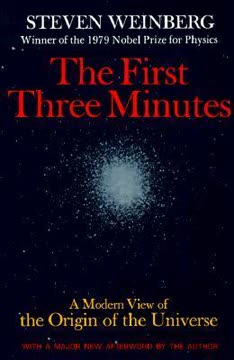
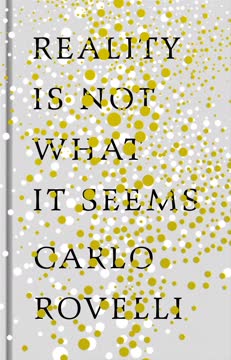
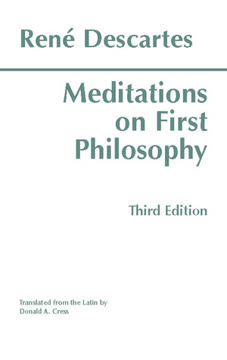
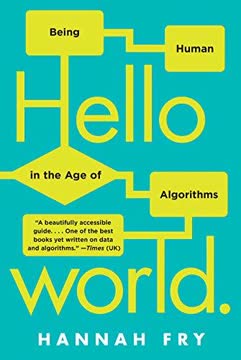


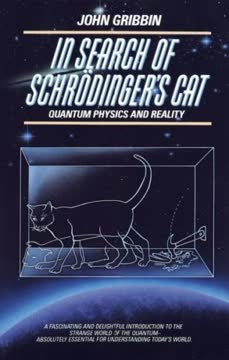
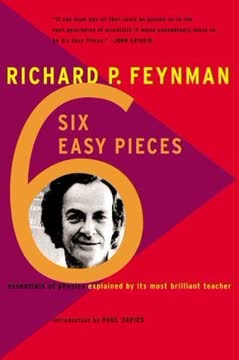
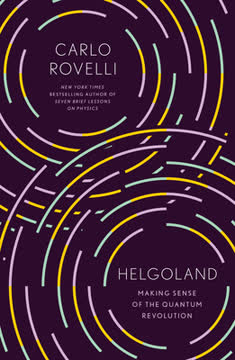
Download PDF
Download EPUB
.epub digital book format is ideal for reading ebooks on phones, tablets, and e-readers.




